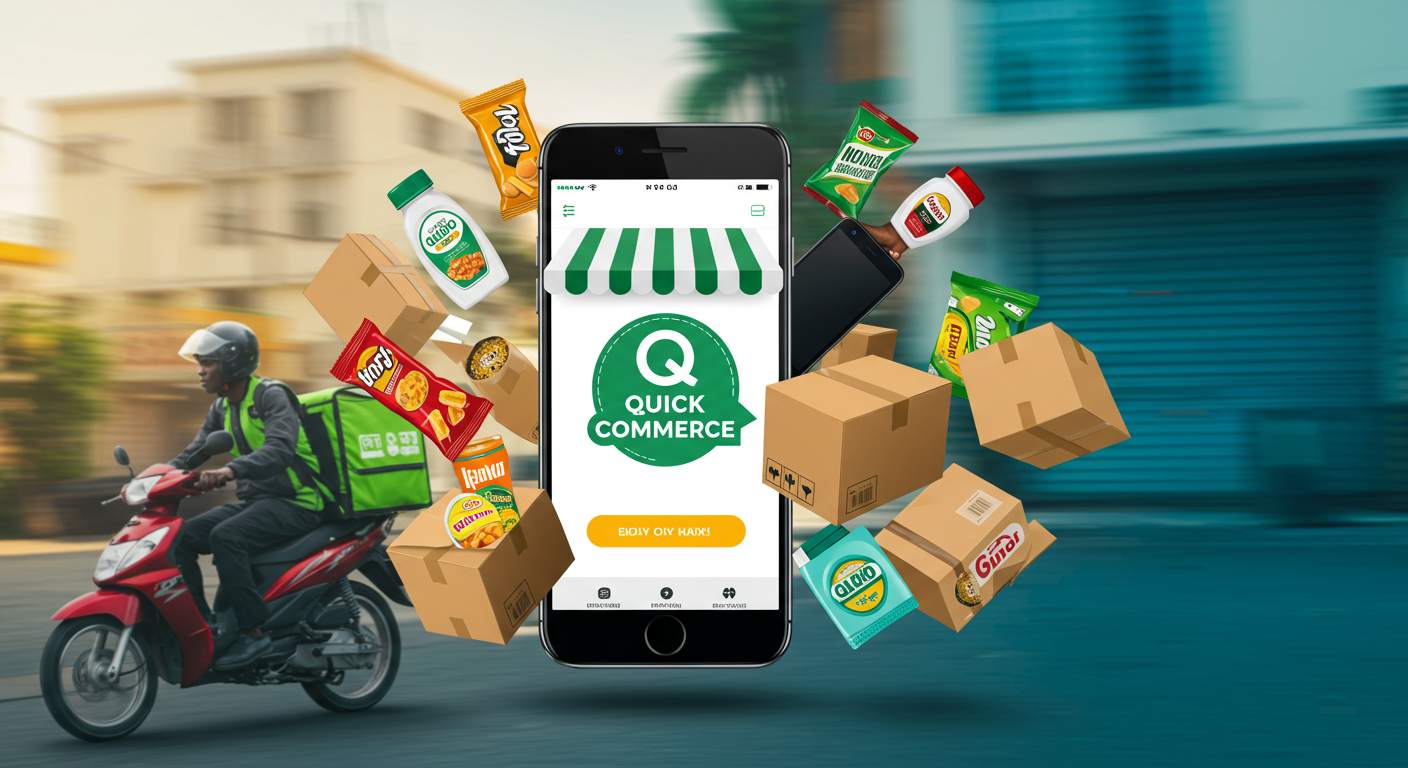The rules of trade are evolving quickly. Welcome to the Quick Commerce (Q-commerce) age, where delivery times have shortened from days to hours, and even minutes. As consumer attention spans decrease and the need for fast gratification grows, Q-commerce is rapidly emerging as the new battlefield for brand recognition and customer loyalty.
The Rise of Quick Commerce in Nigeria
Q-commerce is gaining significant popularity within Nigeria’s metropolitan cities. Companies like Glovo and Chowdeck, for example, are transforming how consumers purchase food, snacks, toiletries, and gadgets, delivering unparalleled convenience directly to their doorsteps in mere minutes.
According to current industry forecasts, the African Q-commerce market is expected to increase by more than 25% year on year (YoY). Nigeria, in particular, is playing a vital role in this growth due to its high smartphone penetration and a continually rising middle class.
Why Q-commerce Matters for Brands
Traditional e-commerce typically involves users actively searching for items. In contrast, with Q-commerce, the platform and product proactively locate the customer. This fundamental shift significantly impacts the branding game.
Firstly, visibility becomes real-time. You’re now battling not just for shelf space, but also for prominence in endless scrolling feeds. Secondly, impulse purchases soar, meaning brands often have just seconds to capture attention and convert. Finally, delivery itself becomes an integral component of the brand experience. A delayed or improperly wrapped order, for instance, can directly impact brand credibility, even if the Q-commerce platform is ultimately to blame.
Read more: Sustainable and purpose-driven brands: the new loyalty currency
How Smart Brands Are Adapting
Leading brands are swiftly adapting their strategies to thrive in this new environment:
Hyper-Localized Marketing
The most effective brands are tailoring their messages and deals based on customers’ specific locations. For example, a drink company might strategically push cold beverages more aggressively in Lagos Mainland during heat waves, especially when delivery app users are most active during lunchtime.
First-Mover Advantage in App Optimization
Much like Google’s search engine optimization (SEO), Q-commerce SEO involves enhancing product photos, names, tags, and leveraging sponsored listings to rise to the top of search results and category tabs within the apps.
Exclusive Bundles and Flash Deals
Fast-Moving Consumer Goods (FMCG) firms are actively using these platforms to provide “only on Glovo” combinations or offer enticing 10-minute flash deals. This approach helps create urgency and provides measurable ROI.
Own the Last Mile
Some innovative brands are even extending their branding efforts to the delivery phase. For instance, Unilever is reportedly testing branded delivery boxes, incorporating loyalty QR codes, and adding “surprise & delight” goods within Q-commerce orders to further brand transactions.
Challenges and Opportunities
While concerns certainly include inventory forecasting, platform reliance, and profitability, the potential rewards are substantial. The primary payoff is gaining access to high-intent, conversion-ready shoppers who are increasingly shunning traditional supermarkets.
Indeed, issues with margins, platform dependence, and precise inventory forecasting persist. However, the immense payoff lies in reaching customers who are highly motivated to make a purchase but are actively avoiding physical grocery stores entirely.
Also Watch: MARKETING EDGE ONTV












Comment
No comments found.